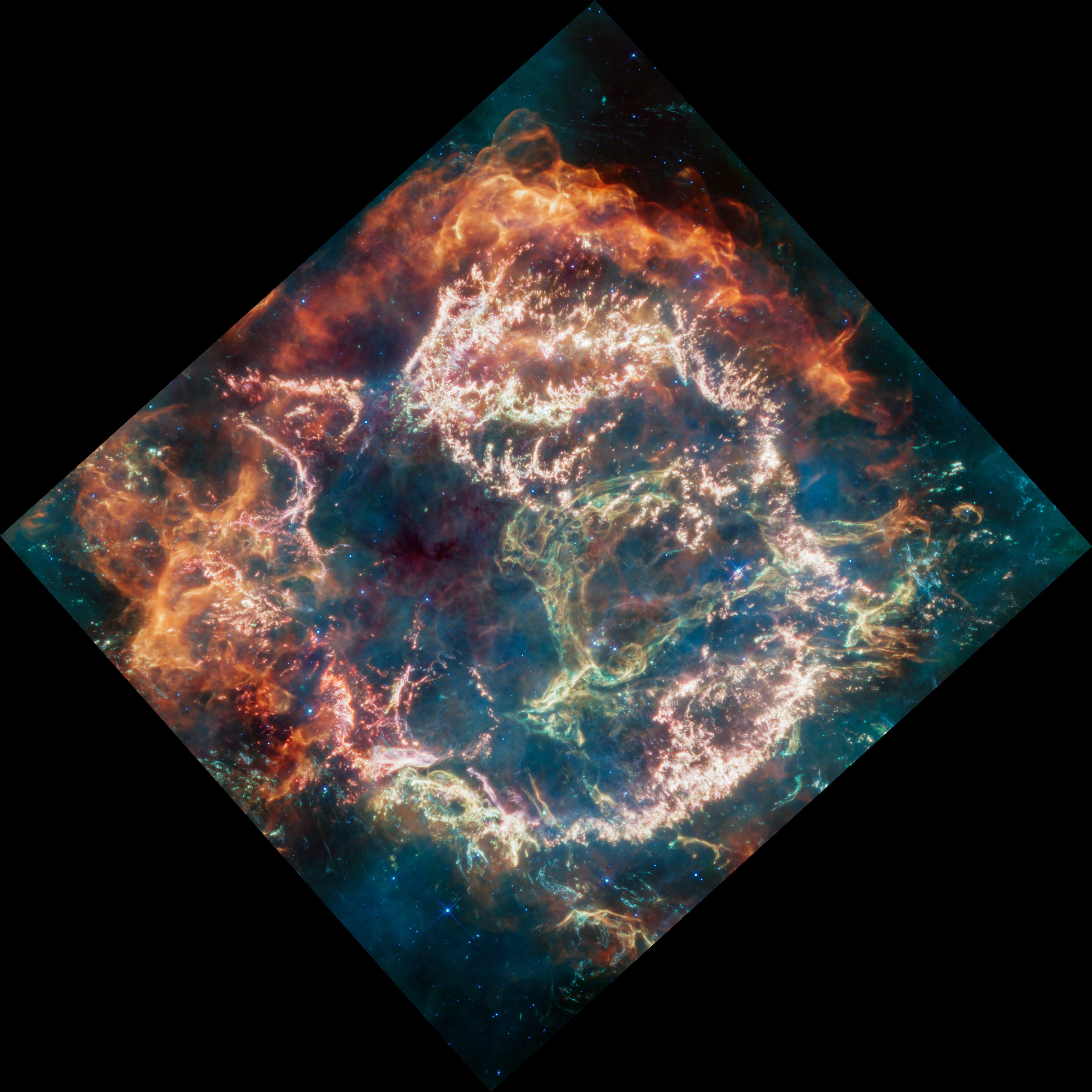Cassiopeia A is a supernova remnant. From our point of view, 340 years ago, a massive star collapsed in on itself and turned into a supernova, flinging material out into the cosmos. This material has expanded greatly in the last three centuries and a half, the expansion shell moving at thousands of kilometers per second and at a temperature of tens of millions of degrees.
It is the youngest known stellar remnant. New observations from JWST in the mid-infrared range show the various structures at an unprecedented degree of detail, revealing structures that were not thought to be there and for which astronomers have not got a ready explanation.
“Cas A represents our best opportunity to look at the debris field of an exploded star and run a kind of stellar autopsy to understand what type of star was there beforehand and how that star exploded,” principal investigator of this JWST program Danny Milisavljevic of Purdue University said in a statement.
“Compared to previous infrared images, we see incredible detail that we haven’t been able to access before,” added Tea Temim of Princeton University, who is a co-investigator on the program.
The full image of Cassiopeia A by JWST. NASA, ESA, CSA, Danny Milisavljevic (Purdue University), Tea Temim (Princeton University), Ilse De Looze (UGent) Processing: Joseph DePasquale (STScI)
Some of the emission seen by the telescope is from warm dust, made visible in infrared in orange and red. This is found in particular at the edge of the bubble, which is expanding in the interstellar medium. There are wisps of stellar material in pink, stretching throughout the remnant, a mix of heavier elements like oxygen, neon, and argon as well as more dust. Then there is the green loop in the middle. That’s the puzzling bit.
“We’ve nicknamed it the Green Monster in honor of Fenway Park in Boston. If you look closely, you’ll notice that it’s pockmarked with what look like mini-bubbles,” said Milisavljevic. “The shape and complexity are unexpected and challenging to understand.”
Supernovae pollute the interstellar medium with heavier elements, but it’s good pollution. It’s what ends up making planets and all life on Earth. The famous quote “We are made of stardust” is about this stardust spread about supernovae.
Studying objects such as this informs us how the dust is spread. It informs us on how the building blocks of the solar system came to be, but also tells us how the pristine gas of early galaxies made of hydrogen and helium came to contain all the remaining elements that make us us.
“By understanding the process of exploding stars, we’re reading our own origin story,” said Milisavljevic. “I’m going to spend the rest of my career trying to understand what’s in this data set.”
Having expanded for so many decades, the remnant now spans about 10 light-years. Cassiopeia A is located 11,000 light-years away.
Source Link: Gorgeous JWST Image Of Cassiopeia Reveals Hard-To-Explain Details
